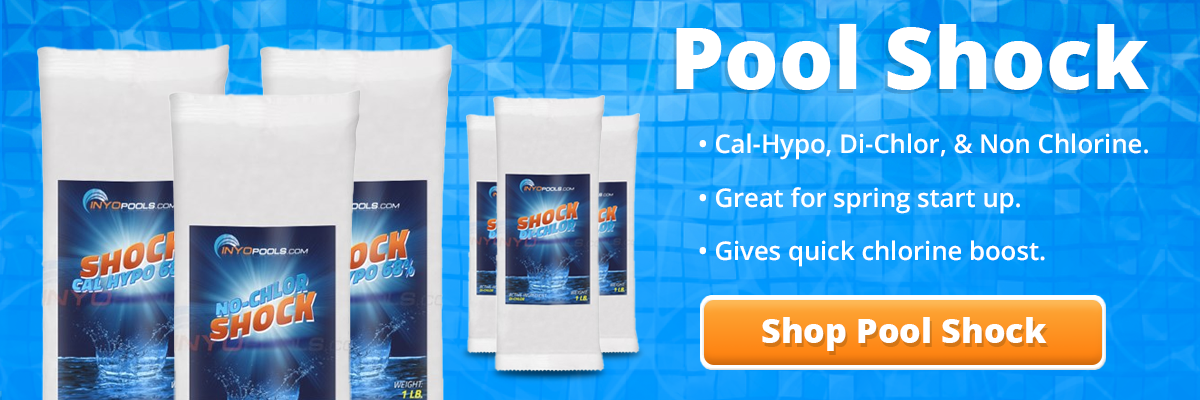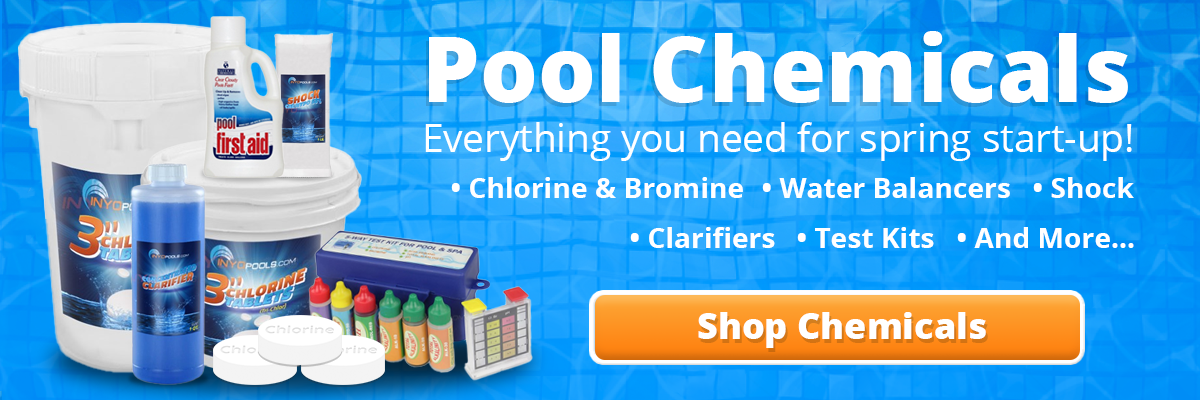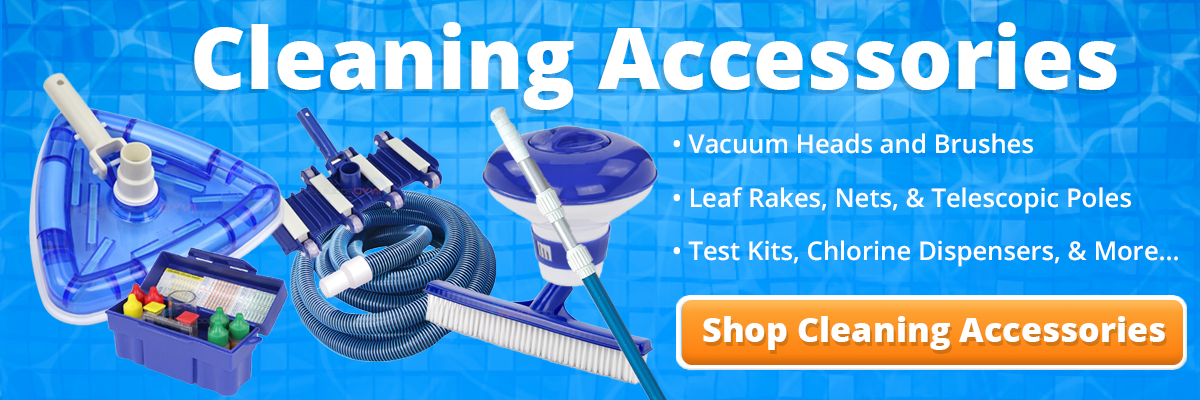Algae in your swimming pool can be the most aggravating part of owning one. We often get the question "how do I get rid of algae". First you have to find the source. Algae can enter your swimming pool through wind, rain, or people entering your swimming pool. Combined with poor circulation, the algae can thrive and grow in your swimming pool. At this point though you probably are not worried about how the algae got there, but rather how to get rid of pool algae.



InyoPools Product Specialist Dennis R. Posted: 8/14/2017
feathers50 - A vast majority of pool owners have used these products without problems. In extreme cases, like chlorine lock, you might have to stay away from products that increase cya or you could make your situation worse. I haven't heard of any product changing chlorine to bromine.Reply
feathers50 Posted: 8/9/2017
I was told not to use powdered shock because it raises cya to much and the only way to get rid of it is by draining the pool. Also not to use algaecide because it adds copper and not to use yellow treat becasue it changes chlorine to bromine. Are any of these things true?Reply
InyoPools Product Specialist Dennis R. Posted: 6/20/2017
Old Dad - I'd scrub the bad sections with bleach, wet down the rest with bleach, then power wash it. Make sure you clean out the filter too. Wear protective gear.Reply
Old dad Posted: 6/19/2017
My mustard algae in my Gunite pool was so bad I have drained it what is the best way after draining to make sure it is all gone bleach? With pressure wash ?Reply
InyoPools Product Specialist Dennis R. Posted: 6/4/2017
Steve - Try diluted chlorine. Start with 19 to 1. Wear gloves and don't leave it on the liner too long. It can fade the colors.Reply
Steve Posted: 6/2/2017
i'm trying to clean my pool liner after the winter is there something that will clean up the algae as it is pretty grond inReply
InyoPools Product Specialist Dennis R. Posted: 7/31/2016
bobj - You may not have added enough shock to your pool. You want to get the chlorine level in the 10 to 15 ppm range. If you see no change, add another heavy dose of shock every 24 hours until you see an improvement. Keep your pump running continuously, brush the pool every day and clean or backwash your filter every day. Make sure the rest of your chemicals are balanced.Reply
Anonymous Posted: 4/20/2019
How many minutes would you backwash it everyday?Reply
InyoPools Product Specialist Robert M. Posted: 4/23/2019
There isn't a set amount of time to backwash each day. You backwash each time the filter rises 10psi above the clean starting pressure. You'd run it on backwash until the water in the sight glass is clear. This usually takes a couple of minutes.Reply
bobj Posted: 7/29/2016
I took your advise & added 3 pounds of shock & after 12 hrs no improvement. When I checked chlorine reading, the color in tibe was red. What should I do now?Reply
Anonymous Posted: 8/10/2015
I have been dealing with mustard algae in my 16'x 48" pool all season. It is so fine that when I vacuumed, it went right through the filter and back into the pool. After a couple of attempts at super shocking and algae killer, I decided to try something else. I took the ladder out of the pool and placed it next to the pump. Then I removed the hose from the fitting going into the pool and taped the hose to the top rung of the ladder. This assures that all of it goes on the ground and not back in the pool. Then I vacuumed it up and "presto" a clean pool again. The first time you do it you may have to do it again in two days but every time you do it, it takes longer for the algae to spread. I do it about every 5 days. It sounds like a pain but 15 min. every 5 days is nothing for a clear, sparkling pool. I learned my lesson and will make sure my liner is clean next year.Reply
InyoPools Product Specialist Dennis R. Posted: 7/17/2013
algaecide - Assuming that your pool chemicals are balanced, you should see results of adding algaecide in 24 hours.Reply
Anonymous Posted: 7/16/2013
How long after you put in algaecide should you see results?Reply
AJ Posted: 7/3/2013
Until today I did not know about back washing to aware. I wish I had know when first opened the pool this summer, having problems with cloudy water , but following all your suggestions, which are great, i now know how to deal with it, thanks AJReply